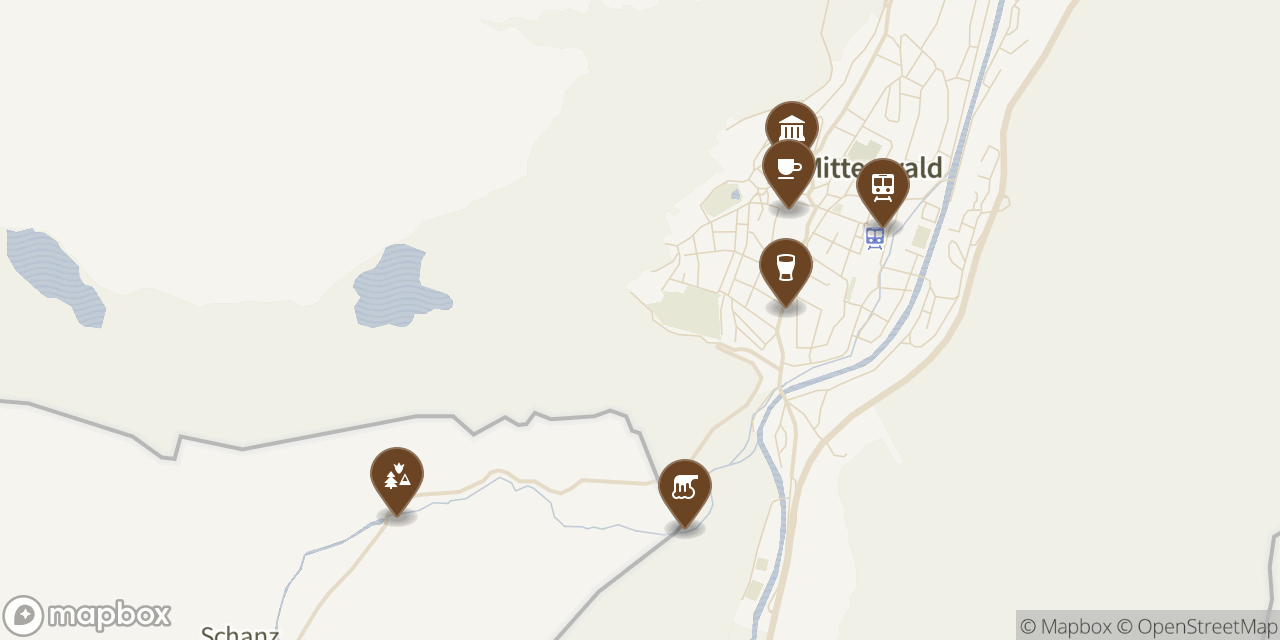Beyond its violin-making fame, Mittenwald's strategic position on ancient trade routes shaped its unique cultural identity and architectural beauty that visitors experience the moment they step off the train.
Mittenwald's remarkable story begins long before Matthias Klotz ever picked up his first violin. The town's strategic location on the major trade route connecting lower Germany and northern Italy created the perfect conditions for cultural exchange and economic prosperity that would define its character for centuries. This wasn't merely a convenient stopping point for merchants—it was a vital artery of European commerce where ideas, craftsmanship techniques, and artistic traditions flowed as freely as the goods being transported. The town's positioning proved so advantageous that when young Klotz returned from his apprenticeship in Italy during the late 1600s, he found not only a receptive market for his craft but also the absence of restrictive guild systems that might have stifled his entrepreneurial spirit. The evolution of Mittenwald's violin-making tradition reveals fascinating insights into how economic necessity drives innovation. When the popularity of lutes began waning in the late 17th century, Klotz demonstrated remarkable business acumen by pivoting to violin making—a decision that would transform his adopted hometown into one of Europe's most renowned centers for stringed instrument craftsmanship. What makes this story particularly compelling is that Klotz had likely been crafting violins throughout the 1690s but wasn't putting his name on them. It wasn't until 1704 that he began officially stamping his instruments, marking the formal beginning of Mittenwald's documented violin-making legacy. By 1760, the demand had grown so dramatically that Klotz had trained eleven additional violin makers, creating a network of skilled craftsmen whose influence would eventually spread across Europe as they established workshops in other cities, carrying Mittenwald's techniques and reputation far beyond the Alpine valleys. The town's immediate visual impact upon arrival sets it apart from many tourist destinations that require visitors to venture into their centers before revealing their charms. Unlike neighboring Garmisch-Partenkirchen, where travelers must walk 10-15 minutes from the station to reach the most picturesque areas, Mittenwald presents its stunning mountain backdrop and beautifully painted houses right from the platform. This architectural harmony isn't accidental—it reflects centuries of prosperity and pride that allowed residents to invest in the elaborate Lüftlmalerei (decorative painting) that adorns many buildings. The town's compact layout creates an almost theatrical experience, where every turn reveals another carefully composed scene of Alpine architecture against dramatic mountain vistas. Perhaps most remarkably, Mittenwald has managed to maintain its authentic character while adapting to modern tourism demands. The abundance of cafes with outdoor seating along the main street isn't just about capitalizing on tourist traffic—it reflects a genuine local culture that values leisurely social interaction and appreciation of natural beauty. The Leutasch Gorge exemplifies this balance perfectly, offering an exhilarating 2-kilometer suspended walkway experience completely free of charge, when similar attractions elsewhere might command premium admission fees. This accessibility, combined with the town's concentrated layout and immediate visual appeal, creates an unusually democratic travel experience where visitors can enjoy world-class Alpine scenery and cultural attractions without the logistical complexities or expense barriers that often accompany mountain destinations. The result is a destination that feels both authentically local and genuinely welcoming—a rare combination that explains why Mittenwald continues to captivate visitors seeking an intimate yet comprehensive Alpine experience.
